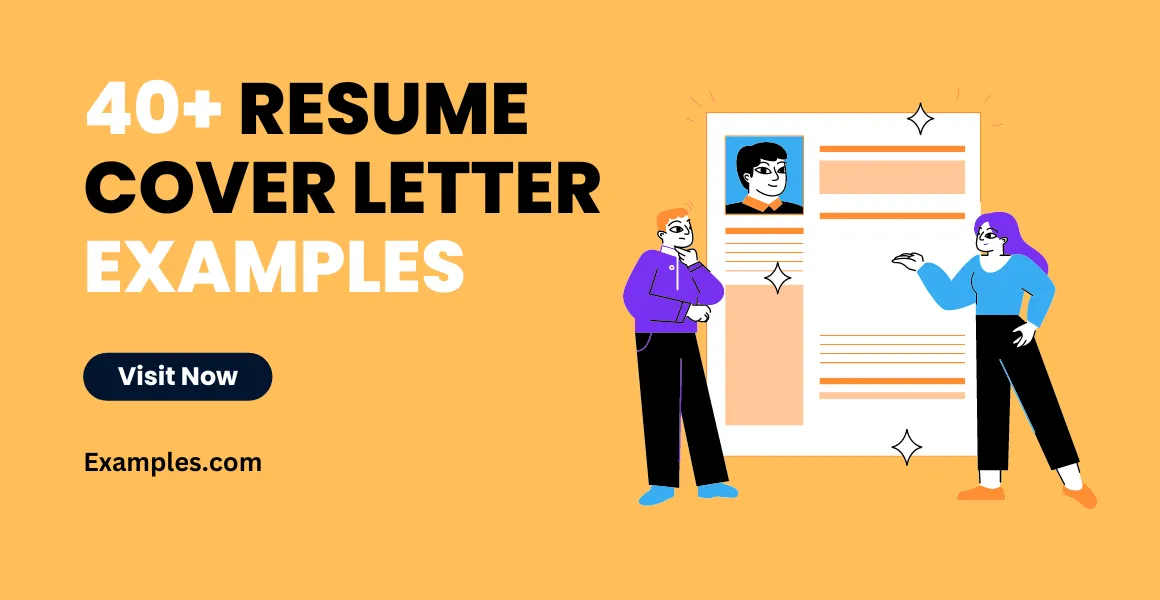What is a Cover Letter?
A cover letter is a crucial document that accompanies your resume when applying for a job. It serves as a personalized introduction, allowing you to highlight your qualifications, express your interest in the position, and showcase your personality. Unlike a resume, which provides a factual overview of your experience and skills, a cover letter enables you to tell your story and explain why you are the ideal candidate for the specific role. It’s your opportunity to make a strong first impression and encourage the hiring manager to read your resume.
Purpose of a Cover Letter
The primary purpose of a cover letter is to persuade the reader that you are a strong match for the job. It’s your chance to connect your skills and experiences to the specific requirements outlined in the job description. A well-written cover letter demonstrates your understanding of the company and the role, as well as your enthusiasm and genuine interest. By addressing the employer directly and tailoring your letter to their needs, you increase your chances of being noticed and invited for an interview. Furthermore, a cover letter provides context to your resume, helping the hiring manager understand the relevance of your past experiences.
Key Components of an Impressive Cover Letter
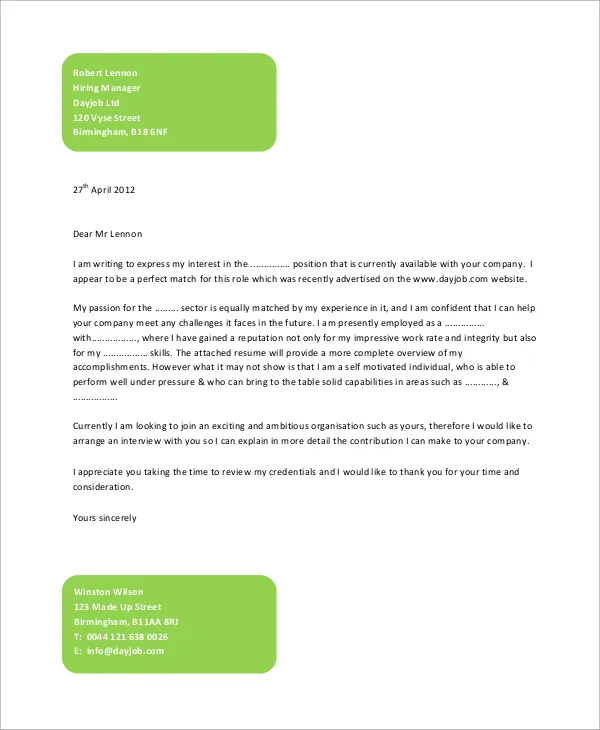
Crafting an impressive cover letter involves several key components that work together to create a compelling narrative. Each section plays a vital role in showcasing your qualifications and making a positive impression on the hiring manager. From the initial contact information to the closing, every element should be carefully considered and tailored to the specific job and company you are applying for. Here are some key elements you should include.
Contact Information
Start with your contact information, including your name, phone number, email address, and optionally, your LinkedIn profile URL. This information should be clearly displayed at the top of the letter. Make sure your email address is professional and that your voicemail greeting is also professional, as this is often the first impression an employer will receive.
Salutation
Address the hiring manager directly, if possible. Research the company to find out the name of the hiring manager or the person responsible for reviewing applications. If you can’t find a specific name, use a general salutation like “Dear Hiring Manager.” Avoid generic greetings such as “To Whom It May Concern,” as they lack personalization.
Body Paragraph 1 Introduction and Purpose
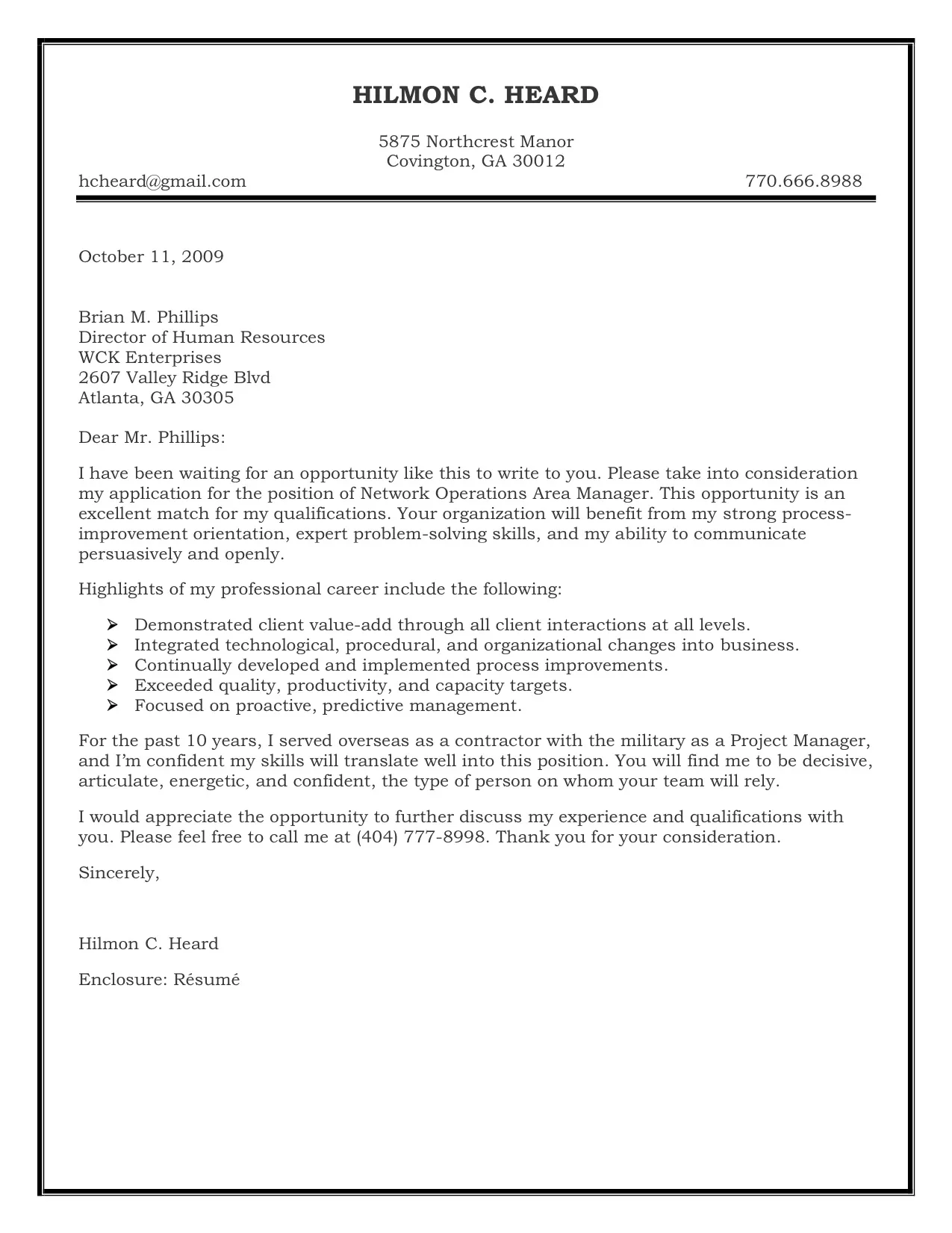
Begin with a strong introduction that grabs the reader’s attention. State the position you’re applying for and how you learned about the opportunity. Briefly mention your most relevant qualification or your enthusiasm for the role and company. Clearly state your purpose for writing; this immediately sets the tone and provides context for the rest of your letter.
Body Paragraph 2 Highlighting Skills and Experience
In this section, highlight your skills and experience that directly align with the job requirements. Review the job description carefully and identify the key skills and qualifications the employer is seeking. Provide specific examples from your past experiences to demonstrate how you have successfully utilized these skills. Quantify your achievements whenever possible to provide tangible evidence of your capabilities.
Body Paragraph 3 Showcasing Personality and Enthusiasm
This is where you can express your personality and enthusiasm for the company and the role. Explain why you are excited about the opportunity and what motivates you. Research the company’s values, mission, and culture and show how your personal and professional goals align with theirs. This helps the hiring manager see that you are a good fit, not just in terms of skills but also in terms of cultural compatibility.
Body Paragraph 4 Call to Action
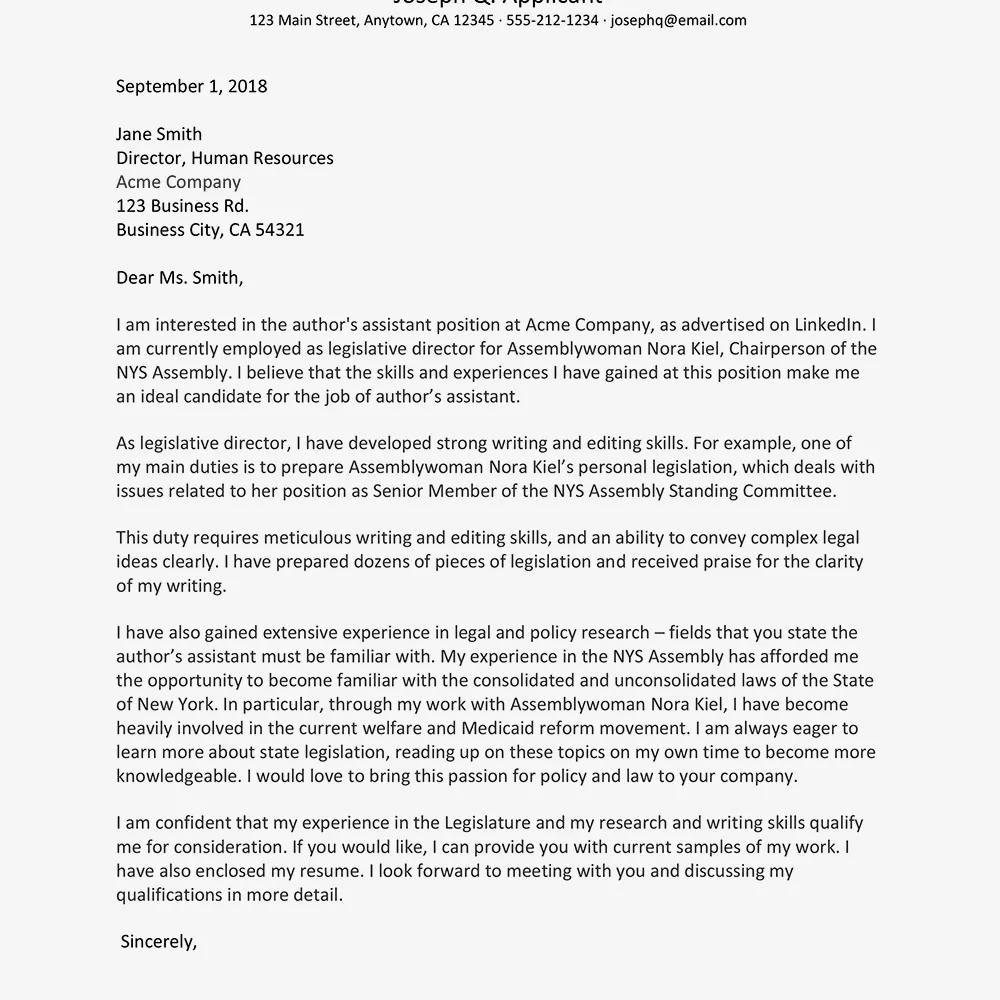
Conclude with a call to action. Reiterate your interest in the position and express your availability for an interview. Thank the hiring manager for their time and consideration. Provide your contact information once more and indicate your eagerness to discuss your qualifications further.
Closing and Signature
Use a professional closing, such as “Sincerely” or “Best regards.” Sign off with your full name. If you are submitting a hard copy, include your handwritten signature above your typed name. For digital submissions, a typed name is sufficient.
Formatting Your Cover Letter for Impact
The visual presentation of your cover letter is just as important as the content. A well-formatted letter is easy to read and leaves a positive impression. Consider the following formatting elements to make your cover letter stand out.
Font Selection and Readability
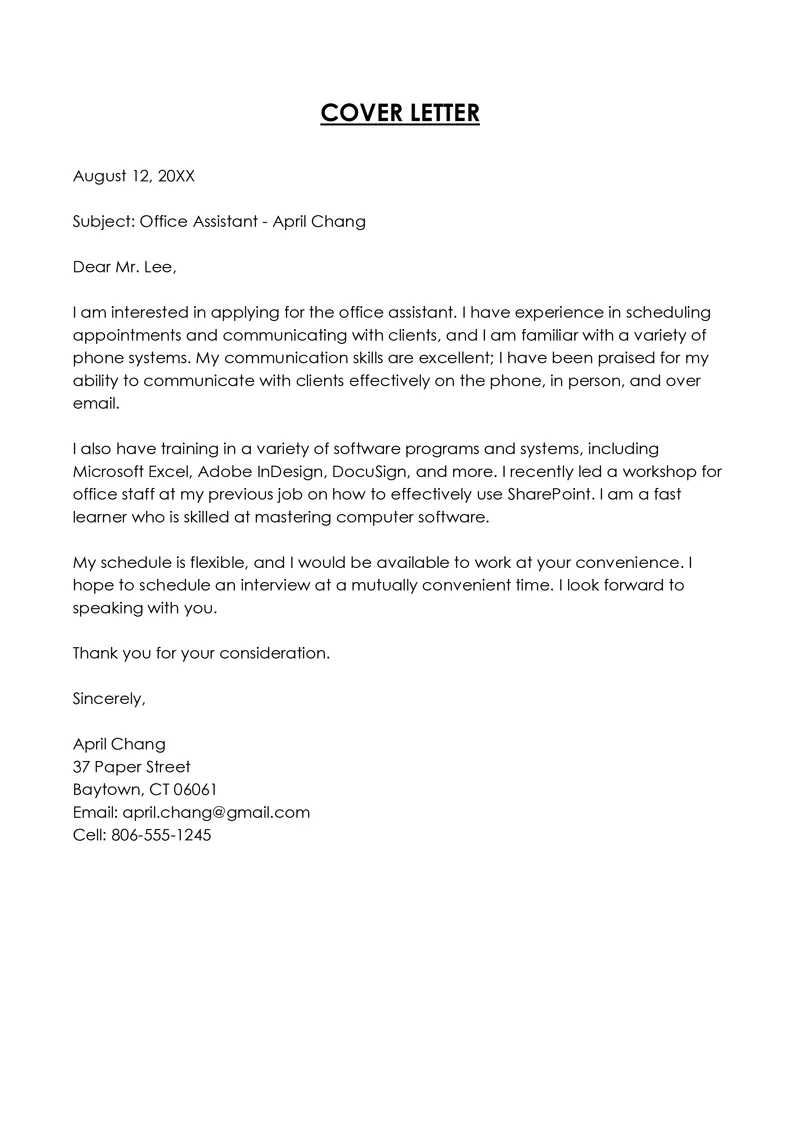
Choose a professional and readable font, such as Times New Roman, Arial, or Calibri. Use a font size between 10 and 12 points for body text. Ensure that the font is consistent throughout the document and that the spacing is clean and easy on the eyes. Avoid overly decorative fonts, as they can distract from your message. A clean, simple font style enhances readability and professionalism.
Length and Structure
Keep your cover letter concise, ideally no more than one page. Structure your letter with clear paragraphs and appropriate spacing to enhance readability. Use bullet points to highlight key skills or accomplishments, if relevant. This format will help the hiring manager quickly grasp the most important information and assess your suitability for the role.
Tailoring Your Cover Letter to the Job
A generic cover letter is unlikely to make a strong impression. Tailoring your letter to each specific job is crucial to demonstrate your genuine interest and qualifications. This involves research, personalization, and attention to detail.
Researching the Company and Role
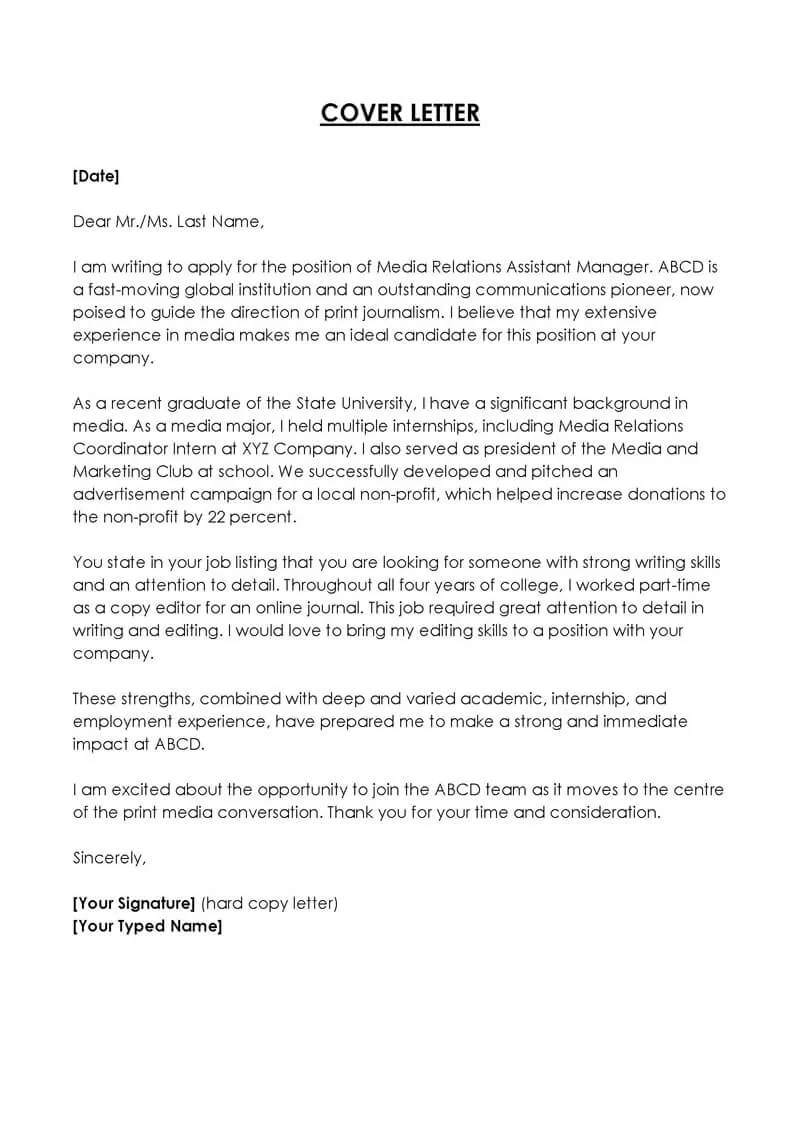
Before you start writing, research the company and the specific role you are applying for. Visit the company’s website, read their “About Us” section, and explore their social media profiles. Understand their mission, values, and culture. Study the job description carefully to identify the key skills, qualifications, and responsibilities. This knowledge will help you tailor your letter to meet their specific needs and demonstrate that you’ve taken the time to learn about the organization.
Using Keywords from the Job Description
Incorporate relevant keywords from the job description into your cover letter. This helps the hiring manager quickly see that your skills and experience align with their requirements. However, avoid keyword stuffing. Use the keywords naturally within the context of your writing, ensuring that your letter remains clear, concise, and engaging. This approach shows that you meet the specified criteria and that you understand what the company is looking for.
Cover Letter Examples to Inspire You
Reviewing examples can provide valuable insights and guidance when writing your cover letter. Analyze the structure, language, and style of successful letters to refine your own approach. Remember to adapt the examples to reflect your unique experiences and the specific job you are applying for.
Example Cover Letter 1
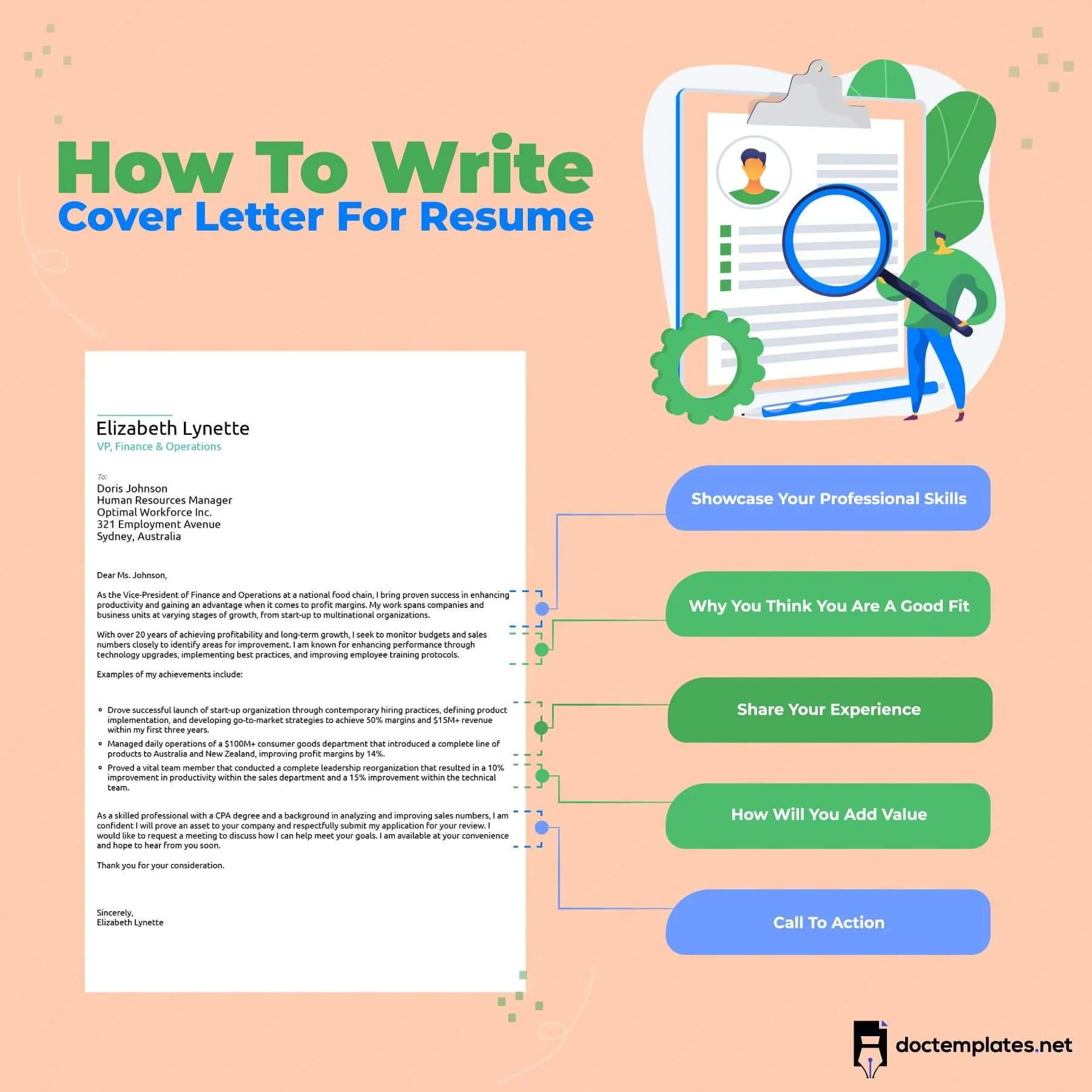
This example focuses on highlighting a candidate’s achievements and quantifiable results. The candidate is applying for a marketing position and emphasizes their success in driving customer engagement and increasing sales. The letter starts with a strong opening, clearly stating the position and expressing enthusiasm. The body paragraphs include specific examples and data to illustrate the candidate’s impact. The tone is enthusiastic and results-oriented, with a clear call to action at the end.
Example Cover Letter 2
This example showcases a cover letter that focuses on a career transition. The candidate is applying for a project management role, leveraging transferable skills from a previous career. The letter begins by acknowledging the career shift and highlighting the relevant skills acquired. The body paragraphs provide concrete examples of project management experience and transferable skills. The tone is confident and adaptable, with a clear emphasis on the candidate’s potential and willingness to learn.
Common Cover Letter Mistakes to Avoid
Avoiding common mistakes can significantly increase the effectiveness of your cover letter. Be mindful of these pitfalls to ensure your letter makes a positive impression.
Generic Content and Lack of Personalization
Using a generic cover letter that isn’t tailored to the specific job or company is a major mistake. Hiring managers can easily spot generic content, which conveys a lack of interest and effort. Always customize your letter to each job, highlighting your specific skills and experiences relevant to the position and researching the company to show your genuine interest. Personalize the letter by addressing the hiring manager directly and referencing specific aspects of the job description.
Typos and Grammatical Errors
Typos and grammatical errors can damage your credibility and make you appear unprofessional. Proofread your cover letter carefully before submitting it, and consider using spell-check and grammar-checking tools. Ask a friend or family member to review your letter as well. Attention to detail demonstrates professionalism and attention to quality, setting you apart from other candidates.
Overuse of Clichés
Avoid using clichés and overused phrases that don’t add value to your letter. Examples of clichés include, “I am a team player,” “I am a hard worker,” and “I have a proven track record.” These phrases are vague and don’t convey any specific information about your skills or experience. Instead, use specific examples and action verbs to describe your accomplishments and demonstrate your abilities. Replacing clichés with concrete examples will make your letter more memorable and impactful.
Proofreading and Editing Your Cover Letter
Proofreading and editing are essential steps in the cover letter writing process. These steps help to eliminate errors and enhance the overall quality of your letter.
Tools and Resources for Cover Letter Writing
There are several tools and resources available to help you write an impressive cover letter. These tools can provide templates, examples, and editing assistance to refine your letter.
Online Cover Letter Templates
Online templates offer a structured framework for your cover letter. These templates guide you through the essential sections of a cover letter, making it easier to organize your thoughts and present your qualifications effectively. Many platforms offer customizable templates that cater to different industries and job roles. Using a template can save you time and ensure that your letter includes all the necessary elements.
Cover Letter Review Services
Consider using cover letter review services to get feedback on your letter. Professional reviewers can assess your letter for clarity, grammar, and overall impact. They can provide suggestions on how to improve your writing style, highlight your strengths, and tailor your letter to the job. These services offer a valuable opportunity to refine your cover letter and ensure it effectively communicates your qualifications to the hiring manager.
